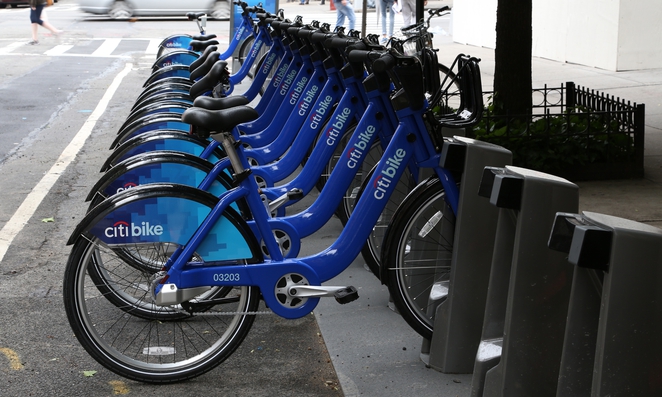About a month ago, New York City Mayor Michael Bloomberg signed a bill that banned electric bikes from the city's streets.
(Like all bikes, they're also banned from sidewalks--not that every rider seems to know that.)
And as a Navigant Research blog post points out, e-bikes were already illegal under an existing ban on "motor-assisted bicycles" within city limits.
The new bill simply made it easier for NYPD officers to enforce the ban, and issue tickets to restaurants that use e-bikes for deliveries--even if they're just parked outside.
Throttles at issue
There remains some confusion over what kinds of e-bikes are targeted. The NYC law covers any electric bicycle that has a throttle, possibly exempting those where the electric motor only assists the pedaling rider.
E-bike makers hope the law will be clarified to permit the latter kind, while the former type will be considered electric mopeds and relegated to vehicle traffic lanes.
Selling electric bikes, however, remains completely legal in NYC. It's just using them that's illegal.
You might think electric bikes would be a boon to a city working hard to reduce vehicular emissions, not to mention its legendary and epic traffic jams.
Fast, heavy, silent
But in fact there are sound reasons for banning e-bikes, which became popular a few years ago as imports of cheap Chinese models soared.
By now, most New Yorkers have had their own encounters with e-bikes--and many of them will lay out the reasons in quite colorful terms.
For one thing, in their most common usage--restaurant food deliveries--the electric bikes didn't replace cars at all, but pedal bicycles. So there was no emissions reduction.
For another, the e-bikes are considerably heavier and potentially faster than conventional bikes.
And e-bikes are silent, without the squeaky chains and clattering that warn pedestrians of delivery guys approaching on regular bikes.

New York City traffic at night, by Flickr user paulobar
Hundreds of injuries a year
Those factors make them far more dangerous to pedestrians--especially at night, when most food deliveries occur.
Thousands of collisions between cyclists and pedestrians occur every month, only a fraction of which are reported.
Still, several hundred require hospital treatment, and a few prove fatal to the pedestrian.
Adding heavier vehicles with more momentum that are less likely to be heard would not help that picture.
Indeed, there's a precedent for the ban: Almost a decade ago, New York City also banned the two-wheeled electric Segway from its streets.
The reasoning was that it wasn't a motor vehicle that could be licensed to operate in traffic, but on the other hand, it was too fast, heavy, and silent to mix safely with regular cyclists and pedestrians either on sidewalks or in streets.

CitiBike NYC racks in Manhattan, by Margaret Bedore (CC 3.0)
Instead: bike sharing
Instead, to make (regular) bicycling more accessible to all New Yorkers, the city launched its CitiBike bicycle-sharing program over the Memorial Day weekend.
While the program has come under vitriolic criticism from a certain part of the political spectrum--and more general griping from regular New Yorkers--more than 10,000 people took rides on its first day.
Operators are now fine-tuning the system based on early riding data, and planning to roll it out beyond the initial launch area (essentially Mahattan below 59th Street).
As of today, 37,000 members have taken more than 180,000 trips totaling more than half a million miles--and the system only opened on May 27.
What do you think? Should electric bikes be permitted on NYC streets? Should they be limited to bicycle lanes, or confined to the vehicle lanes with cars, trucks, buses, and taxis?
Leave us your thoughts in the Comments below.
_______________________________________________













